Vertex AI Grounding Large Language Models
Grounding allows Google’s large Language models to use your specific data to produce more accurate and relevant responses.
Grounding is particularly useful to reduce hallucinations and answer questions based on specific information the model wasn’t trained on. This approach is also called RAG (Retrieval Augmentation Generation).
Implementing a Grounding architecture can take some time. In fact, I have written a dedicated article on how you can implement your own custom grounding solution.
Again, thanks to Google, you can now rely on Google Grounding instead of implementing a custom solution (at least for many standard use cases).
Grounding with Vertex AI
Grounding in Vertex AI is based on Vertex AI Search. Your PaLM model is accessing Vertex AI Search before processing your prompt and receives relevant documents.
That means we have two different products involved
- Vertex AI PaLM API That provides the large language model, either text or chat.
- Vertex AI Search That provides our grounding data in an efficient way.
Jump Directly to the Notebook and Code
All the code for this article is ready to use in a Google Colab notebook. If you have questions, don’t hesitate to contact me via LinkedIn.
Get the Grounding working
To combine the grounding with your PaLM Bison or Unicorn model, you first need to create a Vertex AI Search data store.
Grounding Data
For this example, we ground the LLM on personal information that the LLM wasn’t trained on. Well, maybe the next version of PaLM will have this information, considering it is now available online =).
grounding data:
Sascha Heyer was born in Germany. He grew up close to the border of France and Luxemburg. Since Jan 2021 he is working for DoiT. He is working on a unique blend of Machine Learning, Software Engineering, and Systems Design on the Cloud. He helped so far 306+ companies on their ML journey. In his spare time he is building fully autonomous long range drones.
I have uploaded this grounding data to a Google Cloud Storage bucket. One of many possible options. We will discuss this more in the next section.
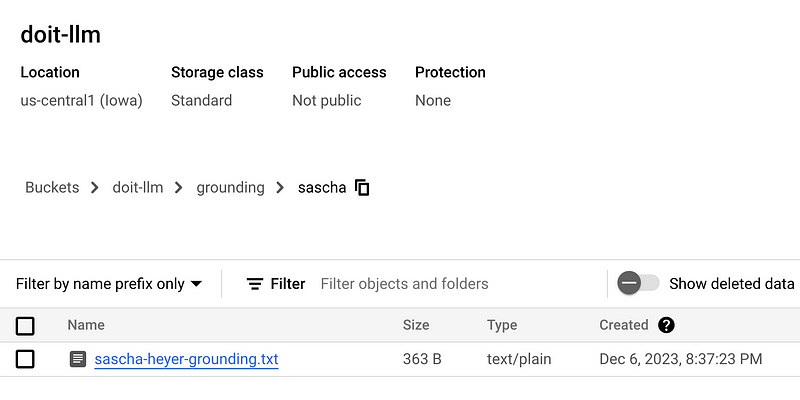
Grounding Data Store
A data store is a location where your grounding information is stored. Grounding is supporting unstructured data stored on Google Cloud Storage.
Back to the grounding data that contains information about myself. I stored that in a simple .txt file on Google Cloud Storage.
You can follow the Google documentation to get this one-time setup done. https://cloud.google.com/generative-ai-app-builder/docs/create-data-store-es#cloud-storage
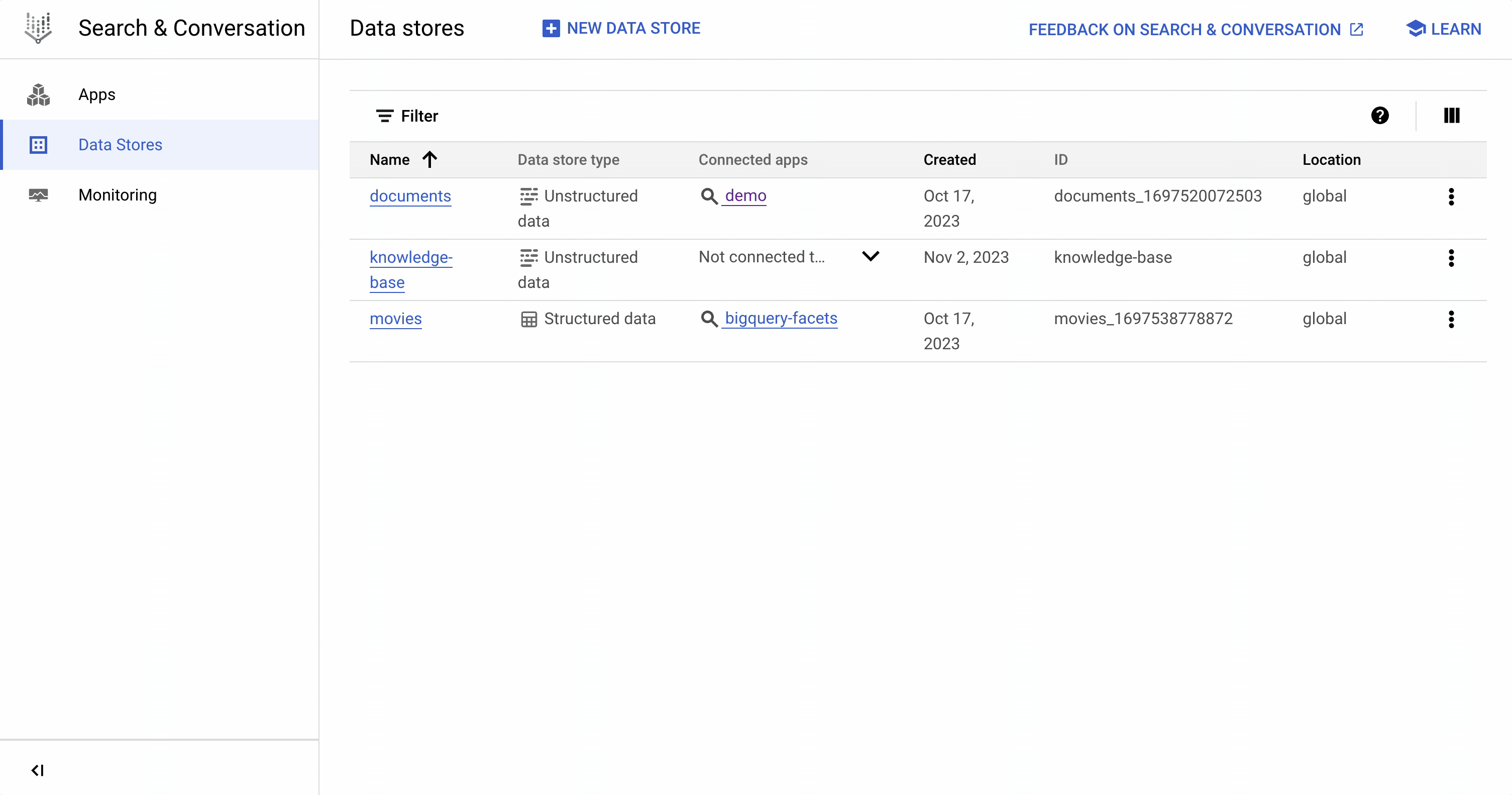
Now that we have the data store, we also need a Search App because we need to enable Enterprise Search. The Search App will be linked to our data store.
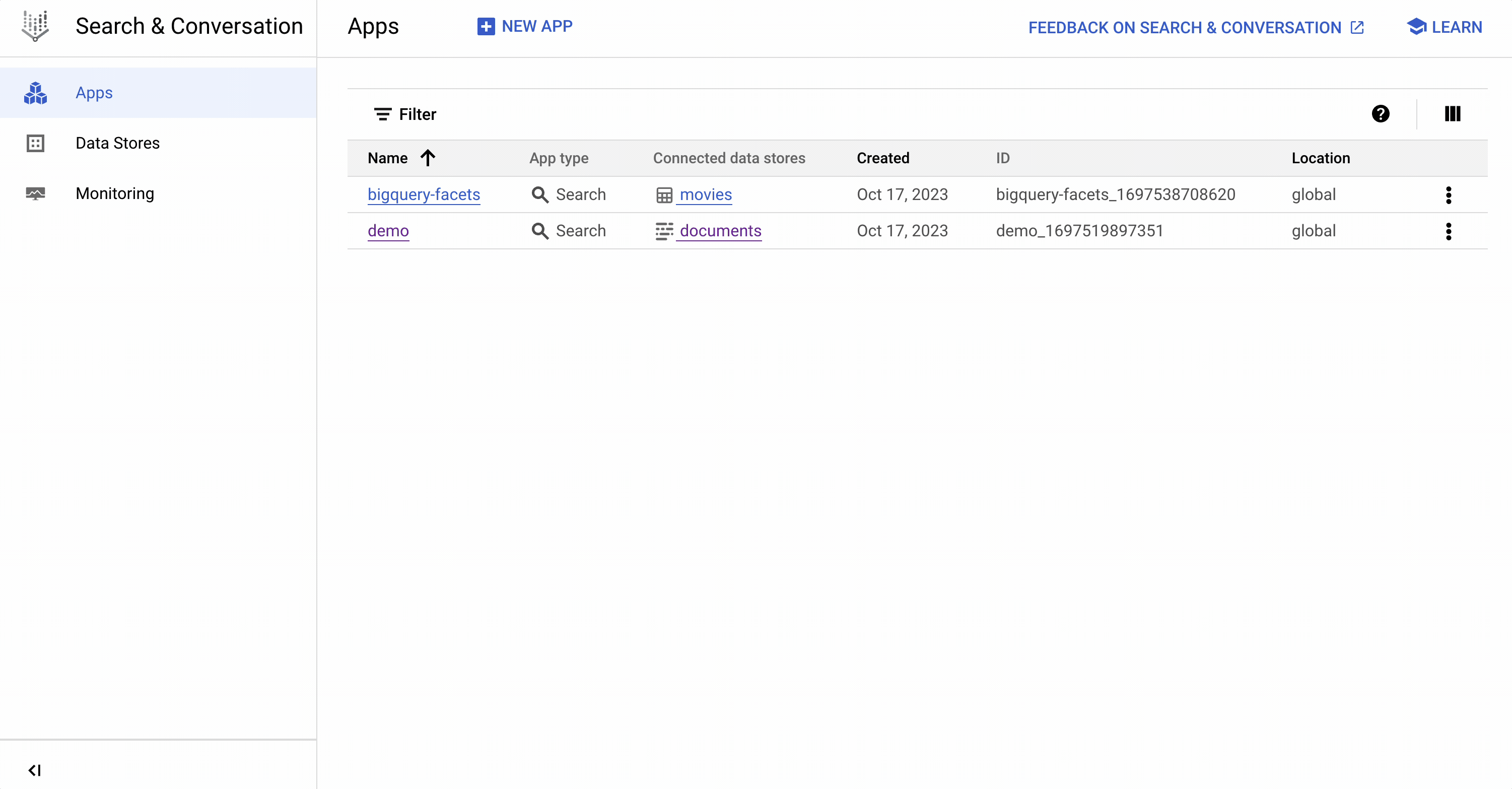
That’s all we need as a prerequisite to set up the grounding. The documents in your data store will now be imported/indexed. This can take a few minutes. Before you enable grounding in the next step, make sure your import is completed.

Enable Grounding
You need to enable grounding and add your Vertex AI Search data store ID from the previous step. Your prompts will now run against the grounding information to provide more accurate and relevant responses.
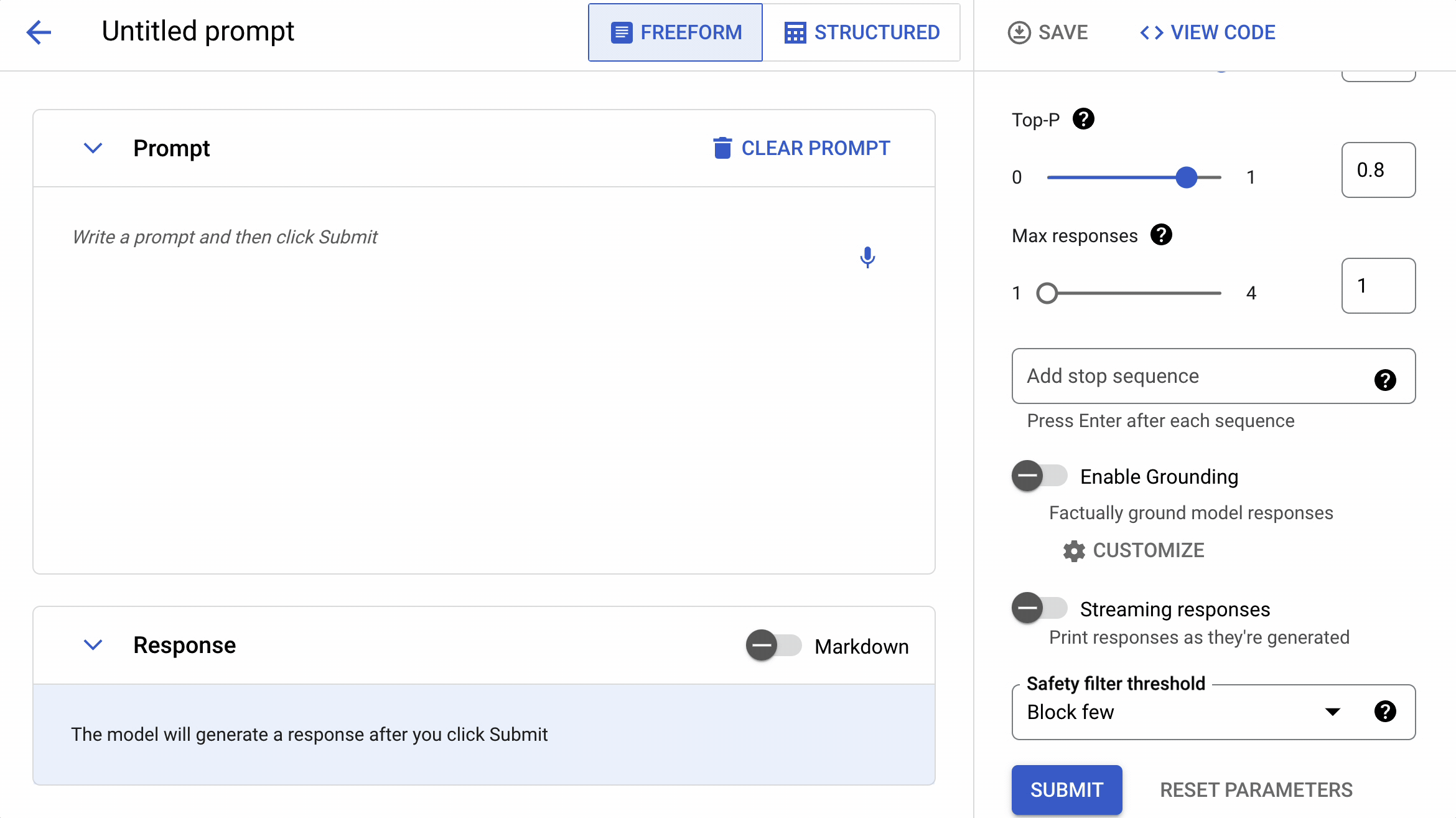
The usage via SDK works in a similar way. We need to add a grounding data source to our text or chat request.
data_store_id = "articles_grounding"
vertex_location = "global"
grounding_source = GroundingSource.VertexAISearch(
data_store_id=data_store_id,
location=vertex_location)
#usage with chat
response = chat.send_message(
prompt,
grounding_source=grounding_source)
#usage with text
text_model.predict(
prompt,
grounding_source=grounding_source,
)Grounding Results
Let us start with the LLM's response without grounding. You can see it does not have any valuable information about me. Or this German artist is just more important =).
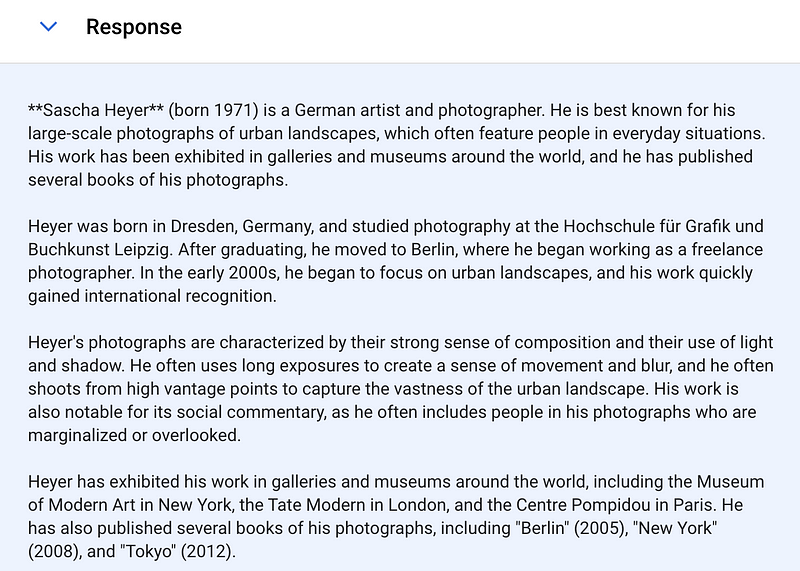
Good, we have grounding for that. After enabling it, the response will now be based on our grounding data. Providing more relevant information.
I love the fact that Google integrates the Grounding Sources. This also helps us identify whether an LLM's response was based on factual information.
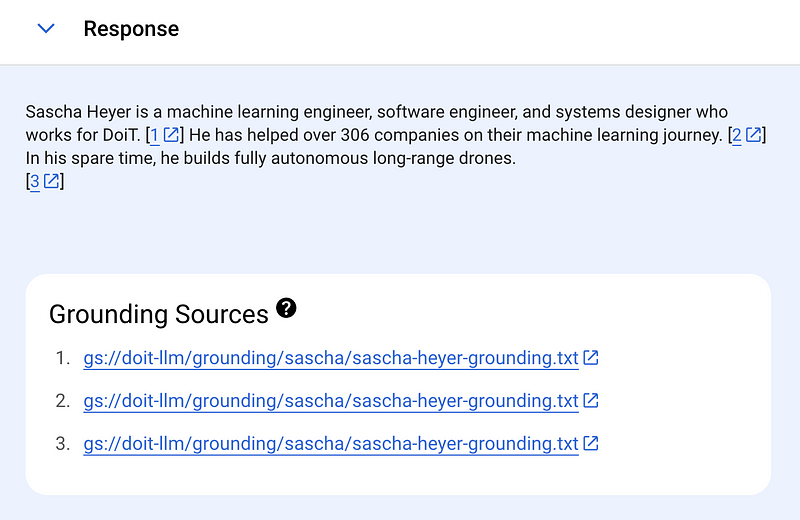

Limitations and Feature Wishes as of December 2023
- Grounding does not support fine-tuned foundation models
- Gemini is not yet supported
- Only unstructured data stores are supported for grounding
- A Vertex AI Search App is required even though we only use the data source when enabling the grounding. This is probably because we need to enable enterprise search.
- New uploaded grounding data to the Google Cloud Storage bucket is not automatically imported. It requires additional implementation effort.
- Grounding Sources are not always shown. If someone has an idea why, let me know. Forcing it with a prompt like this “always return the grounding source” seems to help. The API is always returning grounding sources if available, this seems to be an issue with the UI.
- Enableding grounding requires us to manually paste the reference to the data store in a format like this
projects/sascha-playground-doit/locations/global/collections/default_collection/dataStores/sascha-grounding. We should get a dropdown soon.
I personally wish there had been a dedicated section in the Vertex AI sidebar like this. Instead, it is hidden behind Vertex AI Search, which, up until today, has also not been integrated into the Vertex AI sidebar.
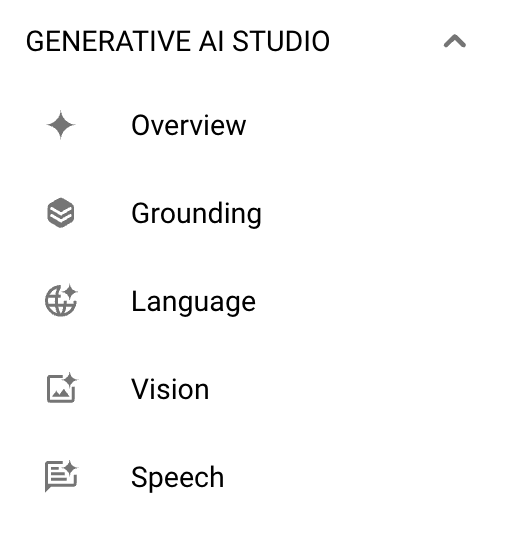
Costs
In addition to your Vertex AI PaLM API cost, you need to add the costs for Vertex AI Search.
Vertex AI Search costs 4.00$ per 1000 queries. A query is, in this case, one prompt that is sent against your grounded LLM. In other words you need to add additional costs of 0.004$ for each request.
Thanks for reading
Your feedback and questions are highly appreciated. You can find me on LinkedIn or connect with me via Twitter @HeyerSascha. Even better, subscribe to my YouTube channel ❤️.




